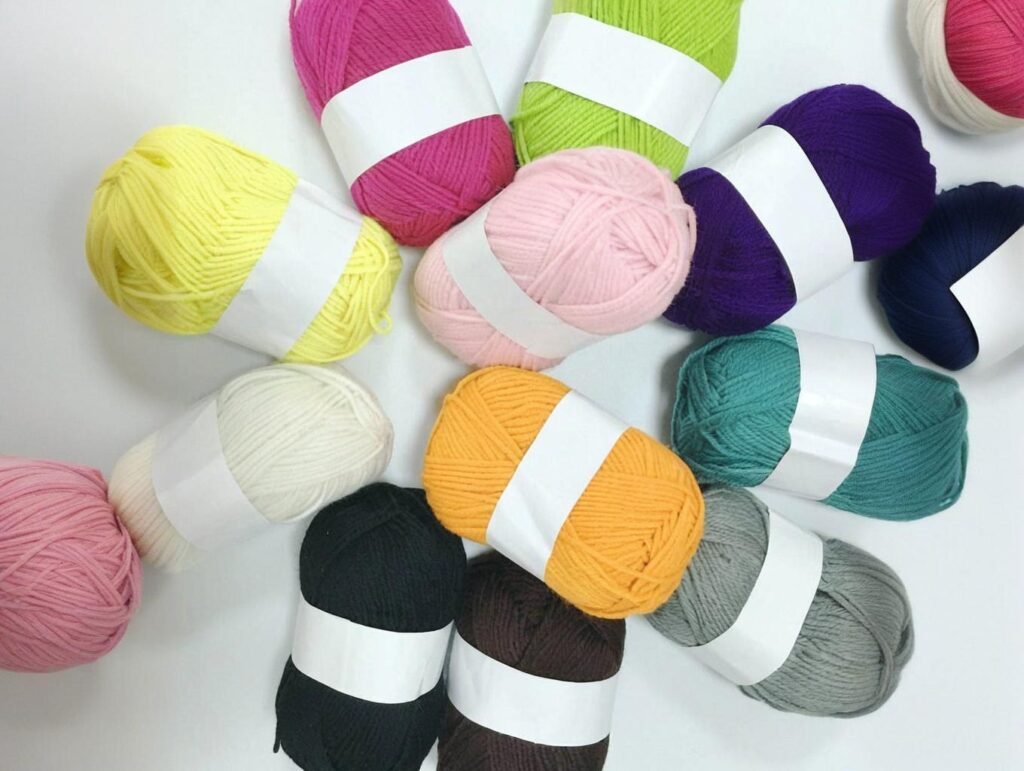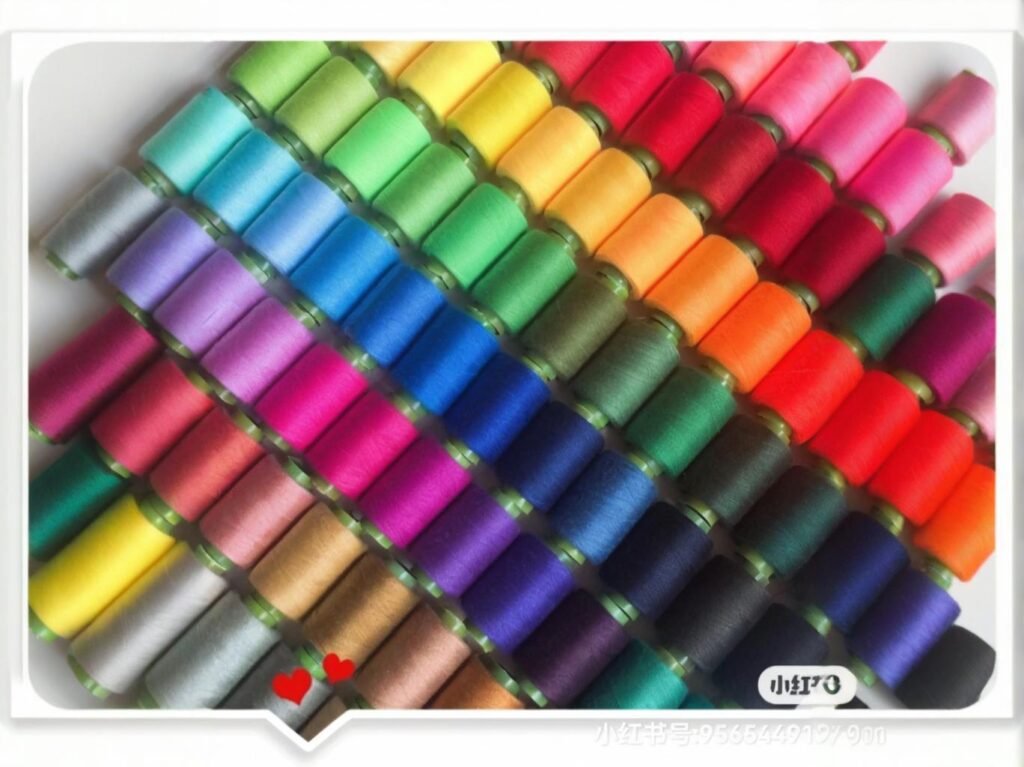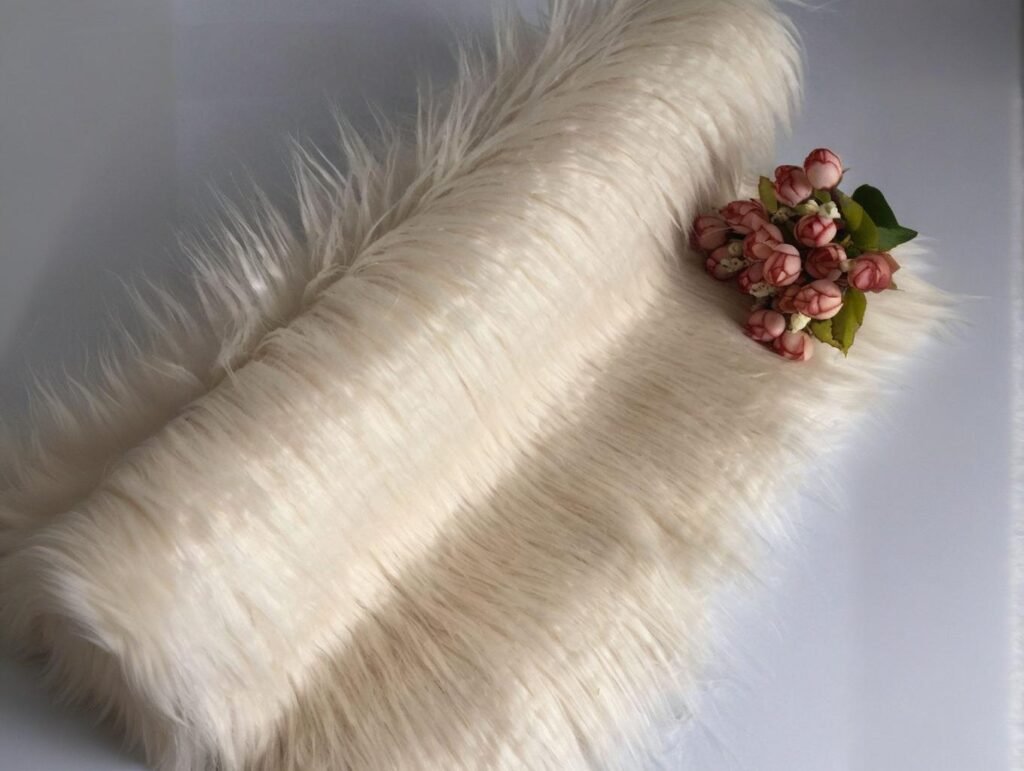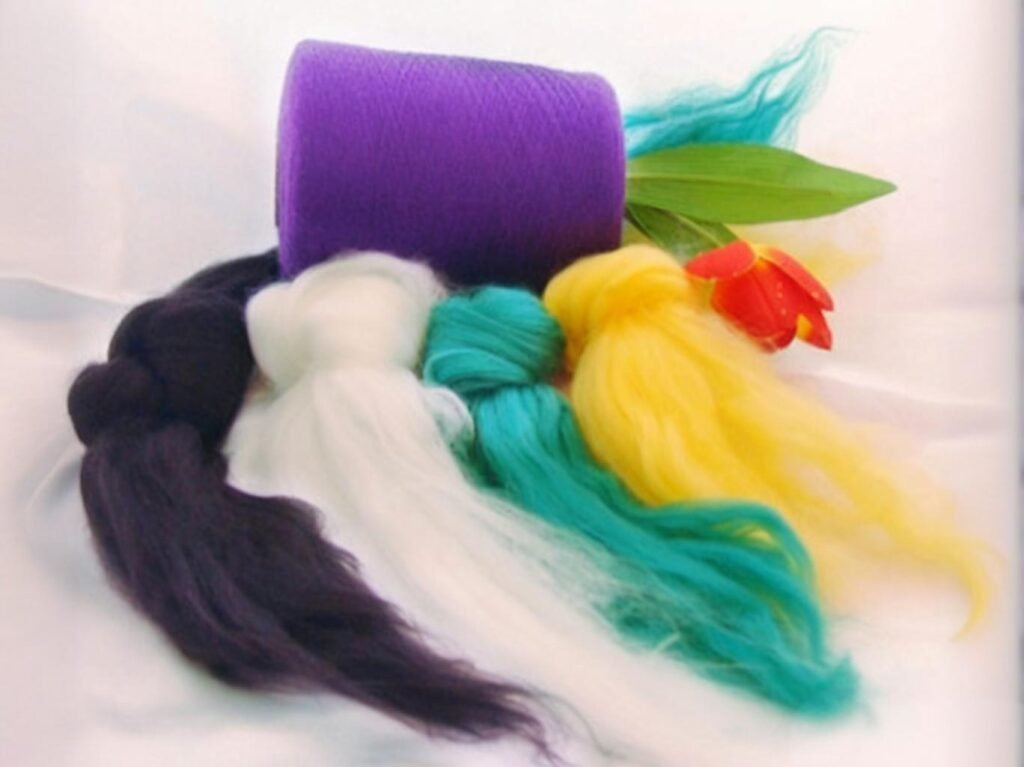Acrylic fabrics have long been hailed as cost-effective alternatives to wool and cotton—praised for their bright colors, warmth, and weather resistance. But for B2B buyers who supply fashion labels, furniture brands, or outdoor retailers, the key question is not softness or color—it’s durability. Can acrylic fabric survive repeated use, washing, sunlight, and abrasion?
Acrylic textile is moderately to highly durable depending on its construction, blending, and finishing. While it performs well in UV resistance and colorfastness, it requires treatments to improve abrasion resistance, reduce pilling, and withstand mechanical stress over time.
From patio upholstery to winter accessories and tech gear, acrylic’s performance is now being pushed beyond traditional limits. In one case, a global outdoor furniture brand collaborated with SzoneierFabrics to develop acrylic awning fabric that passed over 2,000 hours of accelerated UV testing with minimal fade—proving that with the right production standards, acrylic can rival higher-cost synthetics in long-term durability.
In this comprehensive guide, we’ll break down exactly how acrylic performs across durability tests, how it compares to other fibers, and how sourcing teams can identify the most rugged variants for their use cases.
What Factors Determine the Durability of Acrylic Textile?

The durability of acrylic textile depends on its fiber length, yarn spinning method, blend composition, fabric structure (knit vs. woven), finishing treatments, and how it is used in end applications.
The Structural and Chemical Makeup of Acrylic Durability
1. Fiber Type: Staple vs Filament
- Staple fibers (short lengths) mimic wool but pill easily if not treated
- Filament fibers (continuous strands) are smoother, stronger, and more abrasion-resistant
2. Yarn Spinning Method
| Spinning Type | Characteristics | Durability Impact |
|---|---|---|
| Ring-Spun | High twist, natural feel | Moderate pilling resistance |
| Open-End | Looser twist, bulkier | Prone to fuzziness |
| Air-Jet Spun | Tighter, cleaner surface | Best for anti-pilling |
3. Fabric Structure
| Fabric Type | Durability Impact | Use Case |
|---|---|---|
| Knitted | Stretchy, breathable but prone to distortion | Sweaters, scarves, socks |
| Woven | Stable, abrasion-resistant | Upholstery, outdoor covers |
| Non-Woven Felt | Compact but tear-prone | Acoustic panels, liners |
4. Fiber Blends
| Blend Type | Durability Benefits |
|---|---|
| Acrylic + Polyester | Boosts strength, abrasion, and shape |
| Acrylic + Cotton | Improves softness, breathability, bulk |
| Acrylic + Nylon | Adds tear resistance and smoother finish |
5. Finishing Treatments
| Finish Type | Function |
|---|---|
| Anti-pilling | Reduces surface fuzz after wear/wash |
| Anti-static | Minimizes static cling and fiber damage |
| UV Stabilization | Prolongs color and strength in sunlight |
6. Usage Context Matters Durability is also relative to application stress:
| Application | Durability Need | Acrylic Suitability |
|---|---|---|
| Fashion knitwear | Moderate stretch/wear | ✅ Yes (with finishing) |
| Outdoor upholstery | High UV and weather | ✅ Yes (with UV treatment) |
| Industrial bags | High abrasion + load | ⚠️ Limited unless blended |
| Socks/leggings | High flex and rub | ⚠️ Needs nylon/spandex blend |
How Does Acrylic Fabric Perform in Abrasion and Pilling Tests?
Acrylic fabric performs moderately in abrasion tests and is prone to pilling if untreated. However, results improve significantly when using air-jet spun yarns, tighter knits or blends, and applying anti-pilling finishes.
Lab-Tested Durability Performance Metrics
1. Martindale Abrasion Test Results This is the industry standard for measuring how many rubs a fabric can withstand before wear-through.
| Acrylic Type | Martindale Score (Cycles) | Classification |
|---|---|---|
| Basic knit acrylic (unblended) | 10,000–20,000 | Light domestic use |
| Acrylic-polyester woven | 25,000–40,000 | Commercial grade |
| UV-stabilized outdoor acrylic | 30,000–50,000+ | Heavy-duty outdoor use |
Standard for comparison:
- Cotton canvas: \~25,000
- Wool blend: \~20,000
- Nylon: 50,000+
2. Pilling Resistance (ISO 12945-2) Tested after 500–2000 rub cycles.
| Fabric Type | Pilling Grade (1–5) | Notes |
|---|---|---|
| Unfinished acrylic knit | 2–3 | Visible pilling within 10 wears |
| Anti-pilling acrylic (air-jet spun) | 4–5 | Excellent surface integrity |
| Acrylic-poly blend | 4 | Balanced performance |
3. Real Use Example – SzoneierFabrics Client
A premium European sweater brand reported customer returns due to excessive pilling on pure acrylic knits. After switching to air-jet spun yarns with anti-pilling finish, return rates dropped by 72%, and customer satisfaction increased across winter collections.
4. Tips to Improve Abrasion & Pilling Resistance
- Use woven structures or compact knits
- Apply silicone softeners or resin-based pilling control finishes
- Choose polyester or nylon-acrylic blends for rugged applications
- Educate end-users with clear care labels (low-friction washing, no tumble dry)
Is Acrylic Textile Resistant to UV, Fading, and Weather Exposure?

Yes—acrylic textile has excellent resistance to UV radiation, fading, and environmental weathering, especially when treated with UV stabilizers. It outperforms most natural fibers and even some synthetics in maintaining color and strength under prolonged sun exposure.
Why Acrylic Excels in Outdoor and Sunlight-Facing Applications
1. UV Resistance Compared to Other Fibers
| Fiber Type | UV Resistance (QUV Test – 1000 hrs) | Colorfastness Grade (ISO 105-B02) |
|---|---|---|
| Cotton | Poor (fades within 200–300 hrs) | 2–3 (low) |
| Polyester | Moderate | 4–5 |
| Wool | Moderate (yellows over time) | 3–4 |
| Acrylic | Excellent (up to 2000 hrs+) | 5–6 |
- Acrylic contains natural UV-resistant properties within its chemical structure
- When combined with lightfast dye systems and UV stabilizers, it becomes a top performer in high-sun environments
2. Use Cases That Rely on UV Durability
| Product Type | UV Exposure Need | Acrylic Performance |
|---|---|---|
| Outdoor cushions | Constant sunlight | ✅ Long-lasting color & shape |
| Awnings and marine fabric | Salt + sun + wind | ✅ Acrylic outperforms poly |
| Window-facing upholstery | Indirect light exposure | ✅ Prevents fading/discoloration |
3. Testing Method: QUV Accelerated Weathering
This test simulates:
- Ultraviolet radiation
- Moisture condensation
- Temperature cycling
SzoneierFabrics Test Data (Outdoor Acrylic)
| Test Duration | UV Color Degradation | Structural Integrity |
|---|---|---|
| 1000 hours | <5% fade | 100% retained |
| 2000 hours | 10–12% fade | 95% retained |
4. Dyeing Systems Matter
- Solution-dyed acrylic (pigment added before fiber formation) = highest fade resistance
- Piece-dyed or printed = lower fade life unless coated
5. Additional Protection Options
| Enhancement | Purpose |
|---|---|
| UV-absorbing coatings | Blocks additional UVA/UVB exposure |
| Water repellents | Adds protection against rain/wind aging |
| Anti-mildew finish | Prevents microbial breakdown outdoors |
How Well Does Acrylic Handle Repeated Washing and Stretching?
Acrylic fabrics handle washing well with minimal shrinkage or wrinkling, but they require low-heat care to avoid melting. They maintain shape under moderate stretching but are prone to distortion or permanent stretch if overexerted or improperly dried.
Performance of Acrylic Under Mechanical and Thermal Stress
1. Washing Performance
| Test Type | Result for Standard Acrylic |
|---|---|
| Shrinkage (ISO 6330, 40°C) | <2% (excellent) |
| Wrinkle Recovery | High—retains shape |
| Colorfastness to Washing | 4–5 (good) |
- Acrylic does not absorb water, so it dries quickly and resists swelling
- Ideal for fast-moving consumer goods that must survive frequent laundering (e.g., uniforms, socks, blankets)
2. Heat Sensitivity
| Temperature | Effect on Acrylic |
|---|---|
| Below 40°C | Safe |
| 50–70°C | Can start to deform |
| >100°C (ironing) | Risk of melting or glazing |
3. Stretch Recovery
- Acrylic has moderate elasticity
- Doesn’t snap back like spandex or nylon
- Can stretch and hold new shape if overexerted (especially in knits)
Lab Stretch Test Example (SzoneierFabrics):
| Fabric Type | Elongation at 10kg Load | Recovery After 5 min |
|---|---|---|
| Acrylic Knit | 15–20% | 75–80% recovery |
| Cotton Knit | 10–12% | 90–95% recovery |
| Acrylic/Spandex Blend | 25–30% | 98%+ recovery |
4. Key Risks and Buyer Advice
- Avoid tumble drying or use low-heat settings
- Recommend flat dry or hang dry methods
- Blend with spandex or nylon for activewear, leggings, or fitted applications
5. Case Example – Fashion Buyer Use Case A Middle East uniform distributor requested long-lasting, low-iron fabrics for hotel staff garments. We developed a poly-acrylic blend that maintained shape and color after 50 commercial washes and met ISO 105-C06 (colorfastness to washing) Grade 4.
What Is the Tear and Tensile Strength of Acrylic Compared to Other Fabrics?

Acrylic textile has moderate tensile strength and relatively low tear resistance unless reinforced through weaving, blending, or finishing. Compared to nylon or polyester, it is less robust, but it outperforms wool and offers adequate durability for medium-load B2B applications.
Stress and Failure Points in Acrylic Textile
1. Tensile Strength – How Much Pull Can Acrylic Withstand?
| Material | Tensile Strength (MPa) | Notes |
|---|---|---|
| Acrylic (100%) | 20–30 MPa | Acceptable for apparel and blankets |
| Polyester | 50–60 MPa | Higher strength, ideal for straps |
| Cotton | 25–40 MPa | Similar but varies with construction |
| Nylon | 70–80 MPa | Best-in-class for tensile loads |
| Wool | 10–20 MPa | Lower than acrylic |
- Tensile strength is higher in woven acrylic fabrics than knitted ones
- Blended yarns (e.g., acrylic + nylon) significantly improve this property
2. Tear Resistance – Acrylic’s Weak Point?
| Test (ASTM D2261) – Tear Propagation | Result: 100% Acrylic Knit | Result: Acrylic-Poly Woven |
|---|---|---|
| Tear force (N) | 12–18 N | 25–35 N |
| Recovery after tear starts | Low | Moderate |
- Acrylic is brittle under sharp stress, especially in dry, cold climates
- Finish reinforcement, like resin coatings or polyurethane backing, helps minimize sudden rips
3. Enhancement Strategies
| Method | Effect |
|---|---|
| Tighter weave (e.g., twill) | Distributes force more evenly |
| Backing with PU or PVC | Increases load resistance, tear block |
| Blending with nylon | Boosts tensile strength and stretch recovery |
| Cross-directional weaving | Improves multidirectional tear resistance |
4. SzoneierFabrics Case Example For a client producing dog beds requiring load-bearing sides, we developed a coated acrylic canvas with tear strength exceeding 35 N and colorfastness over Grade 5. The material passed 60kg of tension without fraying, and production volumes exceeded 100,000 pcs with under 0.5% return rate.
Which B2B Products Require High-Durability Acrylic Textile?
B2B products that require high-durability acrylic textile include outdoor cushions, commercial-grade upholstery, awnings, soft-sided luggage, protective apparel liners, and branded promotional items. These applications demand UV stability, abrasion resistance, shape retention, and visual durability.
High-Demand Use Cases and Why Acrylic Works
1. Outdoor Cushions & Upholstery
| Requirements | Acrylic Benefits |
|---|---|
| Sunlight exposure (10+ hrs/day) | Excellent UV and fade resistance |
| Rain, humidity | Fast drying, mildew-resistant if treated |
| Repeated use, heavy pressure | Moderate durability with woven structures |
- Often solution-dyed and treated for water repellency
2. Awnings and Marine Covers
- Require high tensile strength, fade resistance, and weather-proof coatings
- Acrylic is lighter than canvas, with better shape retention
- Used in sunshade structures, yacht upholstery, and poolside accessories
3. Soft Luggage and Bags
| Product | Key Needs | Acrylic Solution |
|---|---|---|
| Duffel bags | Shape integrity, lightweight | Acrylic-polyester blends |
| Cosmetic pouches | Surface printability, wrinkle-free | Laminated acrylic fabric |
| Laptop sleeves | UV-stable finish, insulation | Brushed or foam-backed acrylic |
4. Protective Linings and Workwear Layers
- Acrylic fleece is used as a lightweight insulating liner
- Often found in construction jackets, outerwear, and flame-resistant blends (modacrylic)
5. Promotional Items and Fashion Accessories
- Scarves, hats, and branded blankets use bright, colorfast acrylic yarns
- Low cost and good softness make it ideal for mass gift production
6. Case Study – OEM Project at SzoneierFabrics A US-based retailer ordered 20,000 custom picnic blankets. We delivered a 2-layer woven acrylic + waterproof PE backing, which:
- Survived 200+ machine washes
- Maintained color above Grade 4.5 in lightfastness
- Earned a reorder rate of 120% in 6 months
How Do Finishes and Blends Improve Acrylic Textile Longevity?

Specialty finishes and strategic fiber blending can significantly enhance the lifespan of acrylic textiles by improving pilling resistance, moisture control, UV durability, stretch recovery, and abrasion tolerance.
Engineering Acrylic Fabrics for Maximum Durability
1. Common Finishes Used in Durable Acrylic
| Finish Type | Functionality | Recommended For |
|---|---|---|
| Anti-pilling resin | Reduces fiber breakage during wear/wash | Sweaters, upholstery, socks |
| UV absorber treatment | Shields fibers from solar degradation | Outdoor fabrics, awnings, tents |
| Water repellents (DWR) | Enhances moisture resistance | Marine covers, patio cushions |
| Anti-static coating | Reduces static cling and improves comfort | Fashion apparel, fleece blankets |
| Softening agents | Enhances hand feel and stretch perception | Fashion knits, scarves |
- These are typically applied post-weaving or knitting
- Some finishes are durable up to 30–50 washes, depending on type
2. Blending Acrylic with Other Fibers
| Fiber Blended | Performance Gain |
|---|---|
| Polyester | Strength, wrinkle resistance |
| Cotton | Softness, breathability |
| Spandex | Stretch and recovery |
| Nylon | Abrasion resistance, shape stability |
| Modacrylic | Flame retardancy |
Blend Ratios in Common B2B Applications:
| Application | Blend Composition |
|---|---|
| Fleece jackets | 80% Acrylic / 20% Polyester |
| Sofa upholstery | 60% Acrylic / 40% Cotton |
| Stretch scarves | 85% Acrylic / 10% Spandex / 5% Nylon |
| Industrial gloves lining | 100% Modacrylic or 70/30 Modacrylic/Acrylic |
3. Yarn Engineering Techniques
- Air-jet spinning creates cleaner, less fuzzy yarn
- High-twist ring-spun improves structural integrity
- Core-spun yarns with synthetic cores reduce breakage
4. Case Example – SzoneierFabrics Development Project
A Scandinavian brand required anti-pilling fleece throws for the hospitality sector. We created a blend of acrylic/polyester (70/30) with resin anti-pilling finish and silicon softener. After 30 commercial wash cycles:
- Pilling grade remained at 4/5
- Surface appearance remained smooth
- No shrinkage, fading, or stiffness reported
How Can B2B Buyers Evaluate and Source High-Performance Acrylic Fabrics?
Buyers can evaluate acrylic textile durability by reviewing certified test reports, requesting performance-finished samples, verifying fiber composition, and partnering with experienced manufacturers that offer custom development and low-MOQ flexibility.
The Sourcing Checklist for Durable Acrylic
1. Define End-Use Requirements Clearly
| Product Goal | Critical Test Needed |
|---|---|
| Outdoor Upholstery | QUV UV resistance, Martindale >30,000 |
| Garments (knits) | Pilling (ISO 12945), Colorfastness (ISO 105) |
| Workwear Accessories | Tensile strength, flame resistance |
| Premium Apparel | Anti-pilling finish, shrinkage control |
2. Always Request Lab Test Reports
| Test Type | Standard | Good Benchmark |
|---|---|---|
| Abrasion (Martindale) | ISO 12947 | 25,000+ cycles |
| Pilling Resistance | ISO 12945-2 | Grade 4 or above |
| UV Colorfastness (QUV) | AATCC TM16 | Grade 5–6 after 1000h |
| Shrinkage (Wash, 40°C) | ISO 6330 | <2% |
3. Assess Factory Capabilities
- Ask if supplier offers:
- Yarn customization (e.g., anti-pilling spun)
- In-house dyeing/finishing
- Performance coatings (UV, water-repellent)
- Certifications (OEKO-TEX®, REACH, GRS)
4. Prioritize Sampling and Performance Trials
- Test in your real usage environment
- Include lab validation AND practical handling tests
- Provide feedback loop to improve durability iteration
5. Partner with an Experienced Manufacturer
Look for suppliers like SzoneierFabrics who offer:
- Deep understanding of yarn, weave, finishing interplay
- Transparent sourcing + documented performance specs
- MOQ flexibility and fast turnaround
- Post-sale technical guidance and fabric training
Work with SzoneierFabrics to Develop High-Durability Acrylic Textiles
As a seasoned fabric R\&D and manufacturing factory, SzoneierFabrics helps international B2B clients develop acrylic textiles that balance cost, durability, and performance. Whether you need weather-resistant outdoor fabrics, anti-pilling apparel materials, or custom-engineered blends—we deliver with confidence.
What We Offer:
- ✅ Acrylic yarn customization and anti-pilling treatment
- ✅ Advanced dyeing and weather-resistant coating services
- ✅ OEKO-TEX®, REACH-compliant production
- ✅ MOQ starting at 50 meters with scalable capacity
- ✅ Free design consultation and lab sample testing
- ✅ Global export with multilingual support
Ready to build durable acrylic products your customers will trust? Get in touch with our team today.
From lab-tested strength to large-scale production—SzoneierFabrics is your durable acrylic textile partner.

